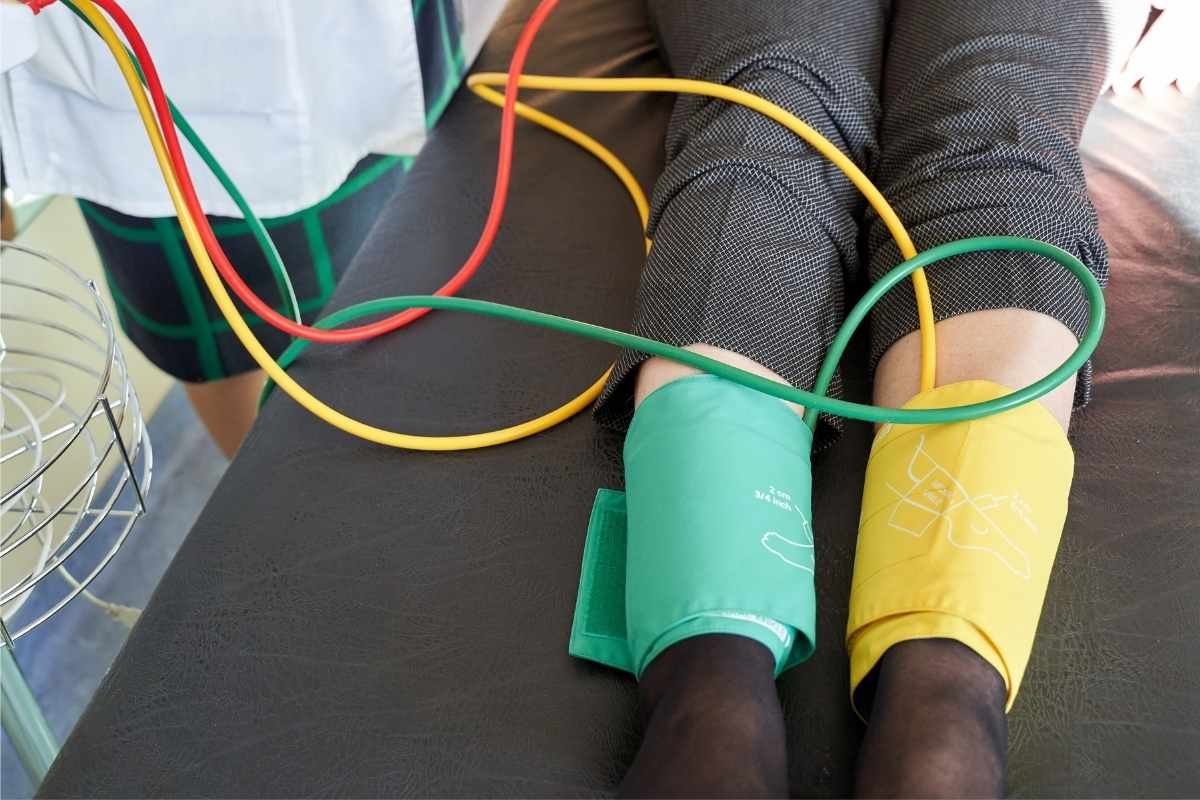
Peripheral artery disease is a common condition that causes limited blood flow to the arms or legs due to narrowed blood vessels. This condition primarily occurs when fatty deposits build up in the arteries (atherosclerosis). Patients with Warner Robins peripheral artery disease experience insufficient blood flow in their legs, resulting in pain when walking (claudication). Fatty deposit buildup can occur in any blood vessel, but it is common in the arteries.
What are the symptoms of peripheral artery disease?
Leg pain with physical activity like walking is the classic symptom of peripheral artery disease. For most people with claudication, the pain gets better with rest—however, some people with peripheral artery disease experience mild or no leg pain. The pain usually occurs in the calf, but it can be felt in the buttocks, hips, and thighs. You may have trouble walking or engaging in other physical activities if the pain is severe. Other symptoms and physical signs that may indicate peripheral artery disease include:
- Numbness and muscle weakness
- Skin that is cool to the touch
- Shiny skin
- Skin color changes
- Slower growth of toenails
- Non-healing sores on feet, toes, and legs
- Hair loss on the legs
If the arteries in your arms are affected, you may experience cramping and aching when writing, knitting, or doing manual tasks. Some people with PAD also have erectile dysfunction.
Causes of peripheral artery disease
Peripheral artery disease develops when fatty, cholesterol-containing deposits accumulate on artery walls. The buildup of fatty deposits or atherosclerosis reduces blood flow through the arteries. Fatty deposits can get into any arteries in your body, but it mainly affects the arteries. When it occurs in the arteries supplying blood to your arms or legs, it causes peripheral artery disease. PAD is primarily a result of atherosclerosis, but it can also be due to:
- Inflammation of blood vessels
- Radiation exposure
- Changes in muscles and ligaments
- Injury to your legs or arms
Risk factors for peripheral artery disease
Peripheral artery disease can affect men and women, but African Americans are more likely to develop this condition. This condition is also more likely to affect people who smoke and those with diabetes. Other factors that make you susceptible to PAD include:
- High cholesterol
- High blood pressure
- A family history of heart disease, stroke, or peripheral artery disease
- High levels of homocysteine – an amino acid that increases the risk of coronary artery disease.
- Obesity
- Age. PAD is more likely to develop in older adults above 65 years. However, it can occur as early as 50 years if you have risk factors for atherosclerosis.
How to prevent peripheral artery disease
The best prevention strategy for peripheral artery disease is maintaining a healthy lifestyle. That means:
- Do not smoke. Smoking puts you at risk of PAD and other health problems like chronic pain and lung cancer.
- Stay within your ideal weight. Obesity puts you at risk of peripheral artery disease and other problems like type 2 diabetes and hypertension.
- Limit your intake of foods with saturated fats
- Control your blood sugar
If you have further questions about peripheral artery disease, consult your doctor at Middle Georgia Vascular Surgery Center & Vein Solutions.
